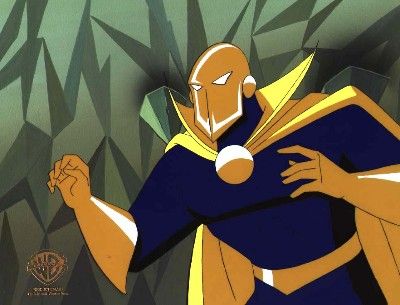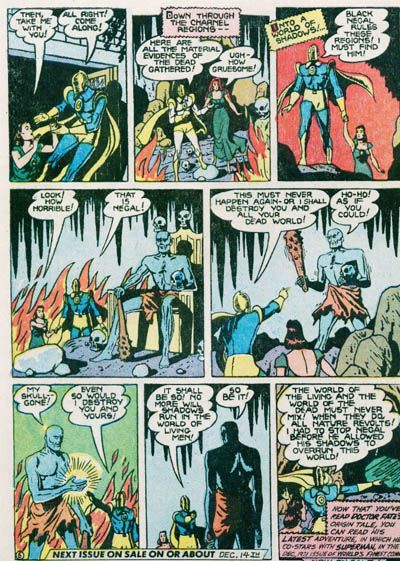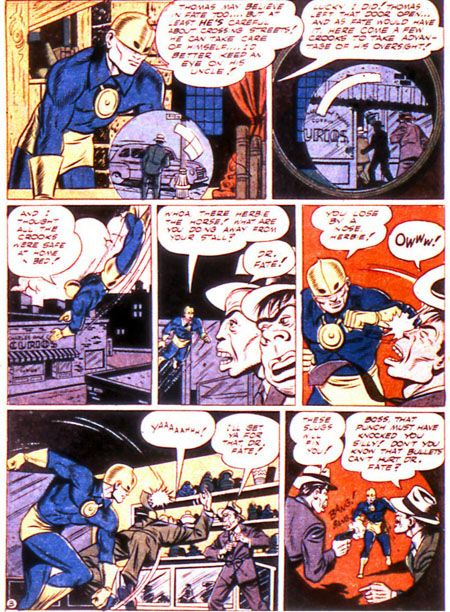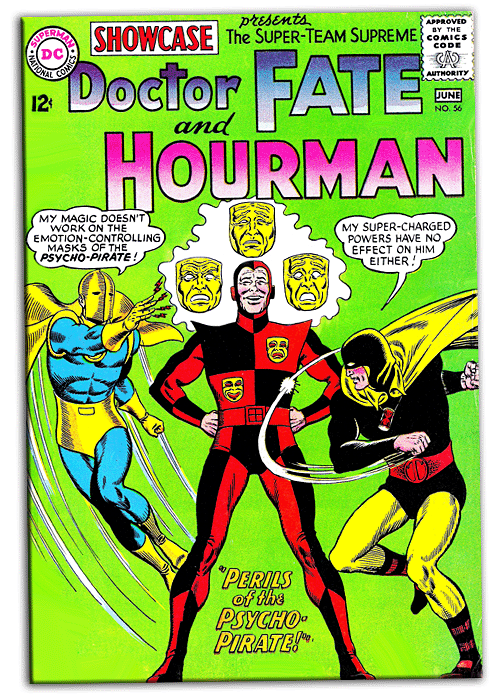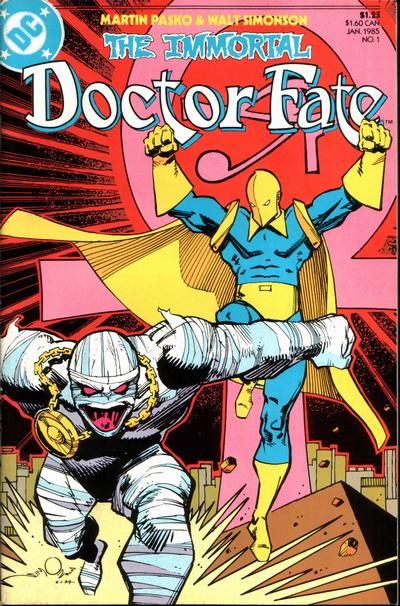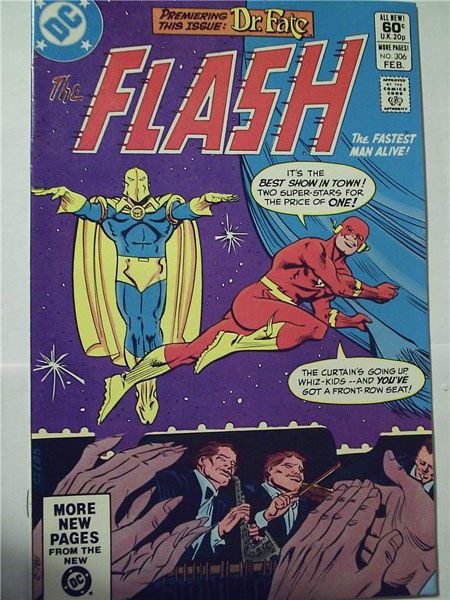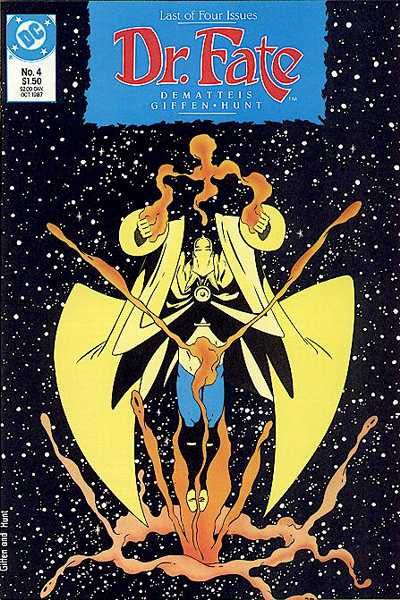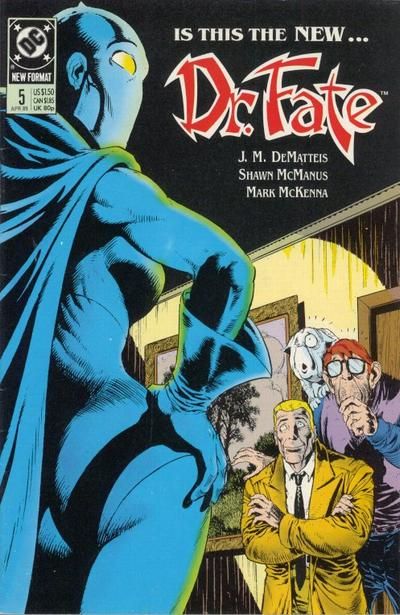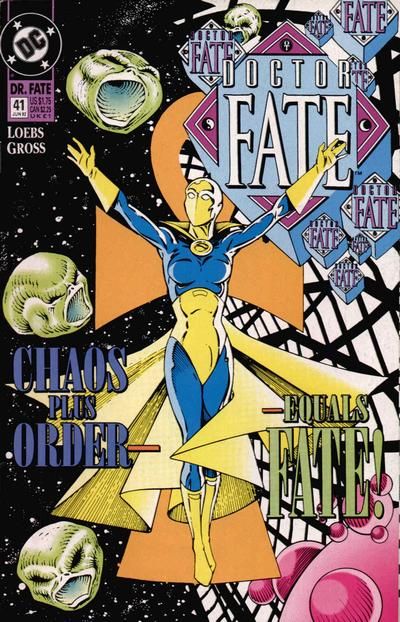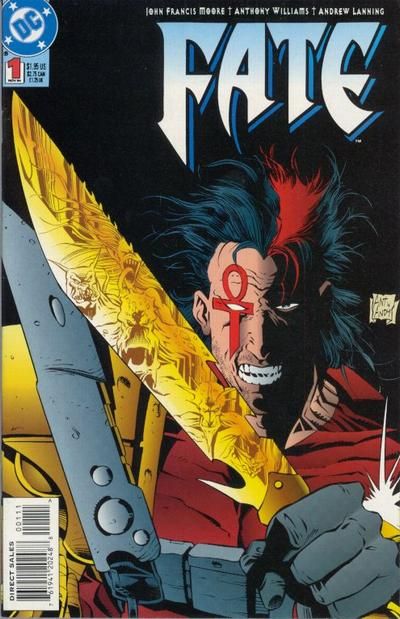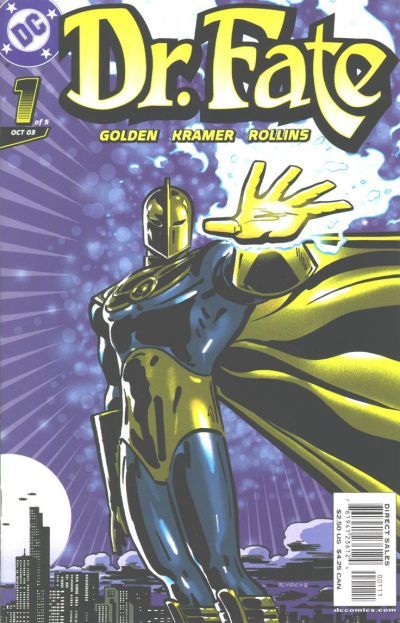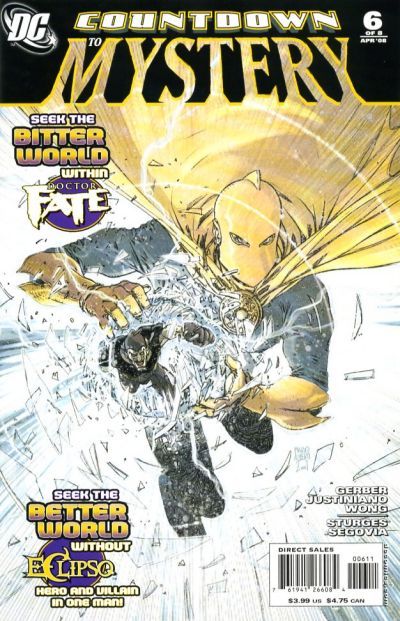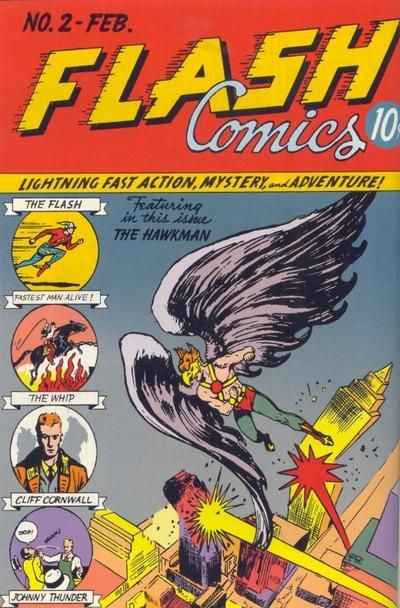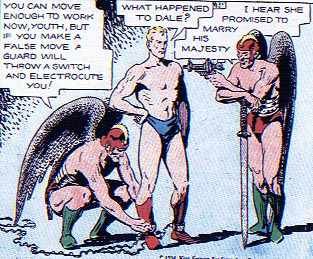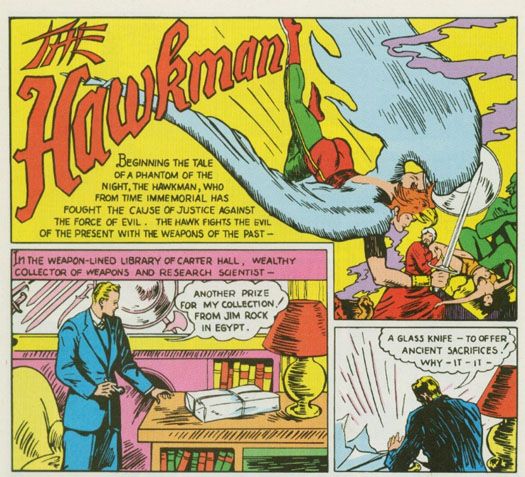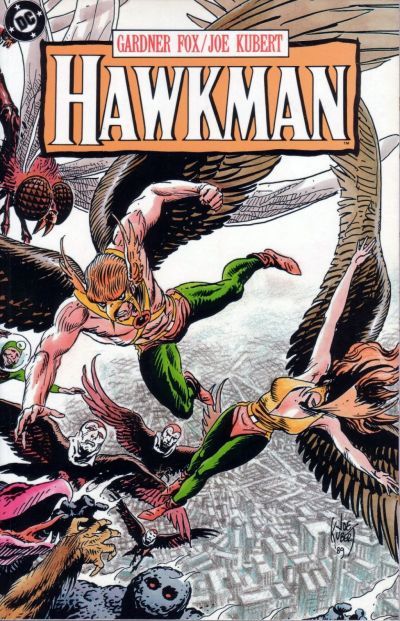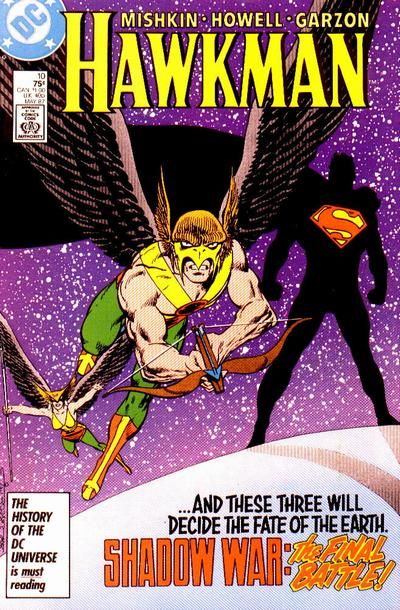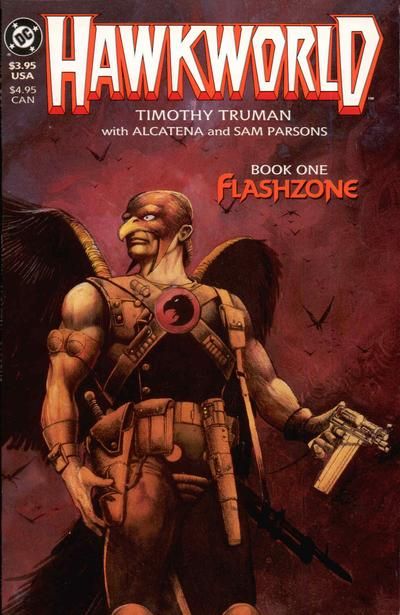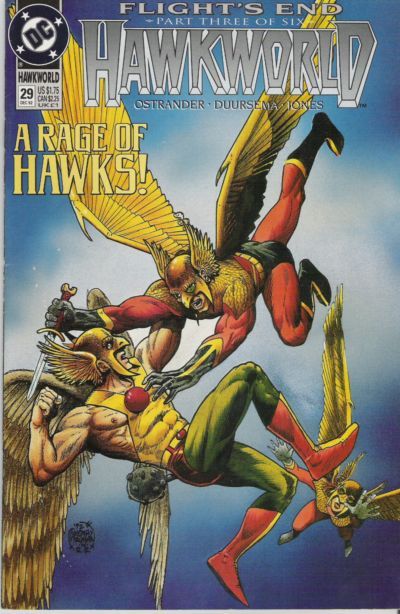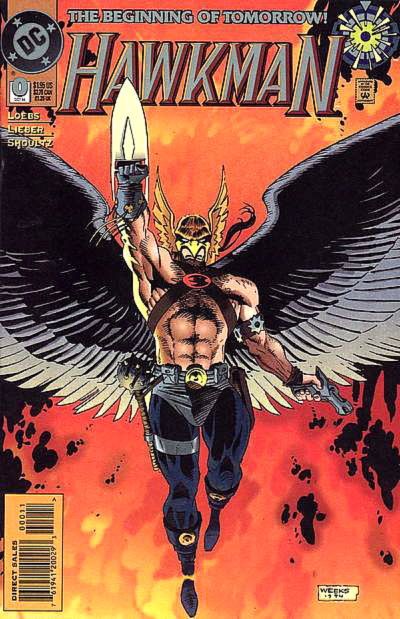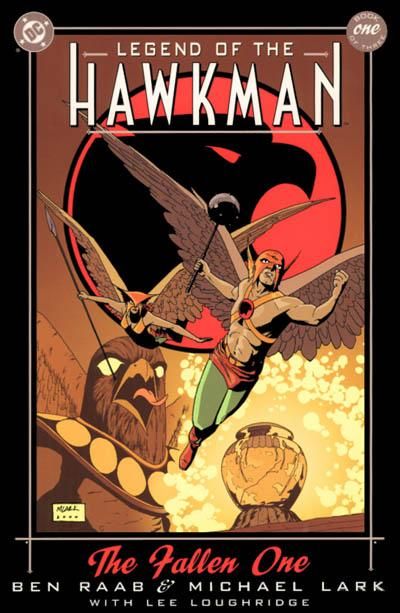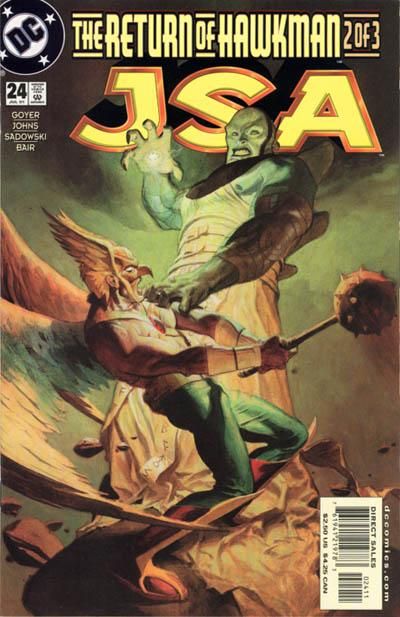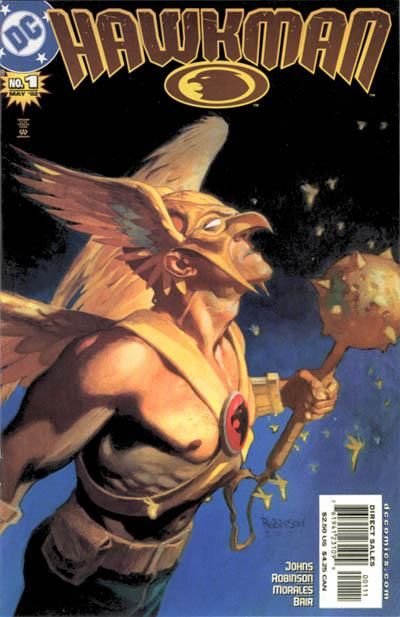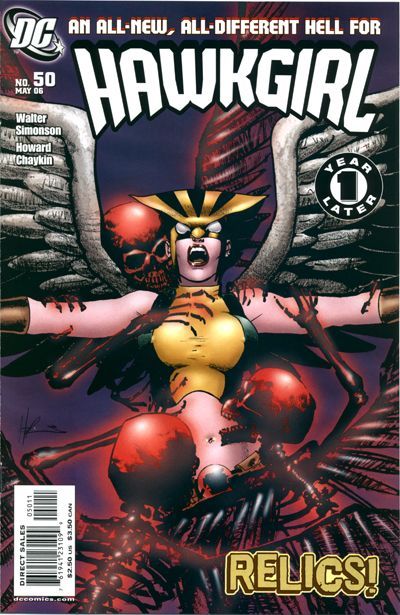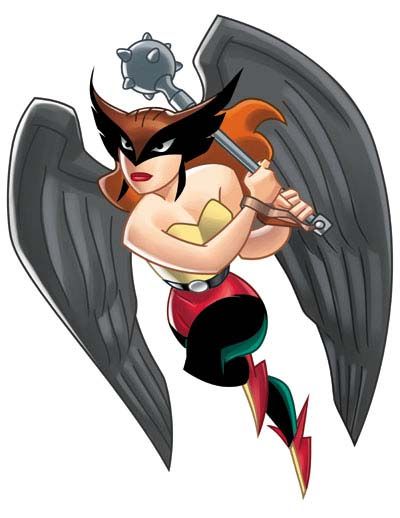It's a game all superhero fans play, especially at conventions or other gatherings of the faithful: "How would you fix __________ ?"
I have my own pet theories about certain characters, and I'm sure you out there reading this have a list of your own. We all do it; I was in a comics shop last week and the owner was off on a rant about how Marvel movies SHOULD be made.
As it happens, the shop was closing... for good, which is how I happened to be there -- everything was half-price. Or less. (It would be uncharitable of me, I suppose, to suggest that perhaps this business was going under because the owner would rather rant at his customers than sell to them... after all, I scooped up a longbox or so of stuff for my students at eight-for-a-dollar and he discounted THAT price. He's a nice guy, for a spluttering over-the-edge fanboy. Just no business sense.)
Most of what I was picking up was manga and all-ages junk for the kids, but there were some items of interest in there for me too. A lot of them were failed "fixes" for superheroes, as it happens. Stuff I didn't bother with when it came out but was worth a look at 13 cents.
Actually reading the books, later, it struck me how many different tries there have been to revamp or reconstruct some of the heroes... one short-run revival after another, and all of them ending up in the quarter boxes. There must be something people like about these characters. Why can't anyone ever make them a going concern?
Here's a classic example of one that DC keeps reviving -- in different ways. He's been in the cartoons, he's been a high-profile team guy, he's had his own book a bunch of different times... and nobody seems to be able to make him work.
Dr. Fate should work. As a concept, there's nothing intrinsically wrong with him. He's a sorcerer who fights evil; that's a concept that has always had legs, whether it's Mandrake the Magician or Doctor Strange or Harry Potter.
Dr. Fate started in the Golden Age superhero boom, but he never could quite carry a book; his feature didn't even make it to the end of World War II.
And even throughout the four-year Golden Age run the guy got revamped a couple of times. He went from being a vaguely scary otherworldly figure to just another crimebuster.
But none of the fixes took, the strip was canceled and that was that until the Silver Age.
By the mid-1960's, Julius Schwartz had perfected his formula for DC super-hero revivals. Take a Golden Age hero, polish him up and slap a veneer of science fiction over him, and give him a tryout. This modern chrome Camelot cars-with-fins approach works great for the Flash or Green Lantern, but it's a gross miscalculation with a guy like Fate. Despite the JSA's popular guest shots in Justice League, Fate's two Showcase entries didn't really set the world on fire.
Nor should they have, to be honest. The story was pedestrian, and the art... as much as I love Murphy Anderson's work on other stuff, he is so completely NOT the guy for Dr. Fate that it boggles my mind that Schwartz would think he was a good fit. Take a look at that cover up there and the pitiful excuse for a magical attack coming out of Fate's hand. It looks about as threatening as a static shock off a doorknob.
And so that was that, again.
Fate got another tryout in the seventies. And this one really worked, on an artistic level anyway, and must have done pretty well because it resulted in another revival.
In doing their initial audition adventure for Dr. Fate, Martin Pasko and Walt Simonson had a tremendous advantage none of the others had -- they could take a cue from Marvel.
Dr. Strange had been running for quite a while and that strip was pretty much a how-to for anyone who wanted to do magical cosmic superhero stories, it essentially created the genre. Everybody in comics who was doing "magical" anything stole riffs off Dr. Strange; whether it was the psychedelic visuals or just the mysterious tone, everyone from the Phantom Stranger to Zatanna got the mystical makeover. Even Gold Key's Dark Shadows comic started to look a little Ditko-esque.
So Pasko and Simonson had the advantage of actually knowing what genre they were working in -- mystic hero -- and they had a decade's worth of successful examples. That came with the disadvantage, though, of making sure that Dr. Fate wasn't just a rip-off of Strange. This is the problem that I think every single incarnation of the character has had to deal with since then.
How did they solve it? A couple of ways. They emphasized the difference visually, by playing up the Egyptian motif and giving Fate's magic spells and power bolts and so on an interesting geometric look instead of the flowing, liquid Dr. Strange version that we'd all come to expect. They emphasized the man inside the suit, Kent Nelson, a regular guy who had a wife, Inza.
And the most radical change of all, they made Dr. Fate a separate entity, inhabiting the helmet. Kent Nelson puts on the helmet of Nabu and suddenly becomes Dr. Fate, who is a completely different person. This created all sorts of opportunity for drama and tension, suddenly there's a ready-made conflict there that Dr. Strange never had; after all, Strange was a volunteer. Kent Nelson was drafted to be a mystical champion.
That was fresh and it was different and it was well-executed. DC decided to run Fate as a backup in Flash and gave the strip a pretty big push. The stories were fun, well-written and looked great.
And yet... it still stuttered to a halt after a relatively short run, despite some terrific work from Pasko, Keith Giffen, and Steve Gerber. Part of it was timing -- that was right around the infamous "DC Implosion," as I recall, and titles were getting cut and canceled right and left. Still, that was a good start and a fair template for anyone to follow.
Here's the catch -- no one did. This is where the tweaking and the fiddling around starts to mess things up.
Let's recap. What Martin Pasko & co. left us with was a solid premise for a character: a regular guy who's occasionally forced to take on a sorcerous identity to fight magical evils, and this causes drama and tension both in his heroic life and his personal one. He's the main magic hero in the DCU, and has worked with both the League and the JSA. That's a nice open-ended premise. Lots of story fodder there. As our friend John Seavey would say, that's a solid storytelling engine.
So why in the world, in the next revival, would J.M. DeMatteis and Keith Giffen dump all that and start over?
I can think of a couple of reasons, none of them terribly compelling... but prevalent enough in comics that you could call it the Conventional Wisdom of the time.
First of all, and I am certain this was no one's intent at the time of doing it, but Martin Pasko's innovation of making the helmet the center of Fate's consciousness opens the door to the idea that it doesn't matter who's wearing the thing. Any schmoe could put the helmet on and presto, it's the new Dr. Fate.
And in the 80's putting a new guy in the suit was THE sales gimmick to juice up a tired character or get fans to look at your book. Off the top of my head, I recall we saw it with Iron Man, Green Lantern, Marvel's Captain Marvel, the Flash, Wildcat, Dr. Light, Hourman, Dr. Mid-Nite, Manhunter, Captain America, and in the early 90's it ramped up to include Batman, Superman, Spider-Man, and even the Green Goblin. If readers liked the new guy, you could stay with him; if not, it was easy enough to restore the original. It's still being done every so often, as with the recent Aquaman: Sword of Atlantis, but in the mid-80's it was almost a requirement.
Secondly, I think it was done to erase the perception that Dr. Fate was one of those "old guys" in the JSA. For some reason, at that time DC had a real bee in their bonnet about getting rid of the JSA; too old, too much your-father's-Oldsmobile, I don't know what brought it on. But it was a real prejudice back then. DeMatteis and Giffen really burned their bridges -- well, as much as you can in a superhero comic -- by killing off Kent Nelson in the same mini-series. (Thus throwing in an Event Death, too, although in fairness, they didn't really milk it for the sales spike the way we've seen it done other times.) But anyway, the new Dr. Fate was a done deal. Eric and Linda Strauss were IT.
It must have done all right, because I think the Strauss-era Fate lasted the longest. I didn't really keep track of it; I read the miniseries and wasn't impressed, so I didn't stick around. After reading up on those books while researching this, I have to say, though, it gets a little hard keeping track of exactly who it is under that helmet.
Especially after William Messner-Loebs came on board and changed it up AGAIN.
Once again, everything readers liked and had invested in was overboard; suddenly it was Inza Nelson in the outfit. You start to sense a certain desperation about the whole enterprise. No wonder it didn't last.
Now, what is the lesson we can take from all this? Don't mess with a good thing? Don't try and fix what isn't broken? Or just that Many 90's comics editors suffered from A.D.D?
I dunno, but even the last one doesn't begin to justify the reasoning behind this revamp. (I'm not sure what the reasoning ever is behind a new version that deliberately tries to destroy all the accumulated goodwill and affection fans may have for everything that came before, but people keep trying it, so I must be missing something.) The Jared Stevens Fate is a classic what-the-hell-were-they-thinking moment.
And they tried it twice.
It tanked hard both times. After that, it's no wonder DC was a little skittish about the whole concept.
There was yet another revival a few years later, in the pages of JSA, which in itself was a revival book. The Hector Hall version had some good ideas behind it -- clearly, they were trying to rescue the baby from the discarded bathwater. At least the basic concept was back -- possessor of the helmet is drafted to be a powerful otherworldly sorcerer, the A-list magic user in the DC universe.
But it was only a partial victory. A try-out miniseries didn't do a whole lot, and it can be argued that part of the problem was the approach; the character had become loaded down with so much history, and people kept doing stories that referenced the history, that it was a hard sell. Especially since Hector Hall, the guy under the helmet, had his own ridiculously convoluted history as well, and two convoluted histories are not two great tastes that taste great together, no matter how heroically Geoff Johns tries to make it so.
But it also can be argued that maybe Dr. Fate just isn't an A-lister. Maybe he's just not a guy to carry a series. Maybe it's just that (as comics editors often say) magical guys are too hard, their powers are too all-encompassing to create real drama or jeopardy.
Except I just don't buy it, sorry. Especially that last wheeze about how you can't do real adventure or jeopardy with a magical hero. In a world where Harry Potter is dominating the box office and best-seller charts, anyone still making that claim might just as well put on a dunce cap and sit in the corner, they certainly have no business editing any kind of adventure fiction.
As for the rest of it -- there's clearly affection for Dr. Fate out there. He has his fans.
Hell, I'm sort of a fan; I'm predisposed to like magical mysterious-type books. Despite the various huffy editorial dismissals, I can't believe that "the character just doesn't work."
Thankfully, Steve Gerber didn't buy into that idea, either.
The new Dr. Fate in Countdown to Mystery has been great fun, especially since Steve Gerber had been doing a very workmanlike job of building, not just a story, but a workable series premise, from the ground up. It's such a shame that his health problems caught up with him just as the series was really starting to cook. I hope that those who follow him are equally as invested in the idea of building something for the long-term.
I especially hope that they notice how he's avoided all the pitfalls of what came before. Specifically:
1. He's structured the story so that we are introduced to Fate's world along with young Kent Nelson, and the history is limited to a couple of minor shout-outs that you can notice or not. It's new-reader-friendly.
2. He's kept the basic concept. Guy puts on the helmet, gets drafted into sorcery, defends our world from scary stuff.
3. He didn't mess with the costume, keeping an easy point of identification and not throwing away fans' affection for previous versions. Likewise there are nods to what came before without any tedious exposition. In short, he didn't say "screw you fanboy!" to anyone who might be checking this out based on liking an earlier version.
4. He made sure to set up an open-ended premise. Dr. Fate isn't defending us from one SPECIFIC menace, he's not on a FINITE quest. (It amazes me how many ongoing series make this mistake. In television they call it "Gilligan syndrome" -- solve the basic problem and your series is over.)
If you're trying to build a storytelling engine that's going to last, you have to do at least that much. Gerber hit most of those marks in the first couple of issues. Most modern writers take six or twelve issues to get there, and some of them never do it at all.
So that's a good example. Let's take a look at another bad one.
*
The poster child for this sort of stuttering false-start, constant-reboot is Hawkman. I've talked about some of this before but I thought of it again because there were so many Hawk books in the liquidation sale. That guy lives in quarter boxes. These, I cleaned up on; I have an irrational affection for the character's adventures, at least if I can get them on the cheap.
Once again, we're looking at a simple concept, one that should have legs: It's a winged guy that flies and fights crime. And for some reason, no one knows how to make it go.
Back in the beginning, Hawkman lasted slightly longer than Dr. Fate, certainly; but he never was quite able to carry a book, either.
Part of the problem is that the concept was a little too simple. Flying and fighting crime is almost generic. Hawkman, you have to remember, started basically as a Flash Gordon swipe.
So it was always all about the art, wowing the readers with the striking visual of a man with wings. The story is essentially an exercise in reverse-engineering -- how do we explain this guy with the big wings carrying a mace?
The original explanation, that Hawkman is a reincarnated prince, works okay if you don't think about it too hard. It explains why his first instinct is to grab for a mace or a net instead of a .45, and it leads to lots of interesting, mystical story possibilities.
The downside is that, as outlined in the premise, Carter and Shiera Hall are doomed to reincarnate again and again and Hath-Set will be there to kill them each time. So there's a problem: if the outcome is preordained, why bother reading the stories? Hard to get invested in a story where they tell you the ending first. (Though, certainly, it can be done. Titanic made a lot of money.)
But in the Golden Age, nobody was thinking about it that hard. The Hawks just flew and fought crime.
In the Silver Age, Julius Schwartz gave the Hawks the patented sci-fi makeover. Now they were winged policemen from the planet Thanagar.
This is so wrong on so many levels, just conceptually, that I will leave picking dozens of holes in it as an exercise for the scholar. And anyway, it didn't last. Once again it was a strip that was all about the visual, and though the Kubert-drawn issues are regarded as classics, the stories were still pedestrian gimmick stuff... and when Schwartz coupled that with a deliberately unglamorous artist like Murphy Anderson, he put it all on the writing to carry the book. And writing alone -- especially writing based on a premise that makes no sense -- can't carry a strip like Hawkman. It has to have the imposing visual, too.
Normally, that would be it. You'd think the conventional wisdom would be, "Didn't work, let's drop it." But the Hawks found a home in the JLA and they seemed to work okay there, so the Thanagar revision stuck.
But it's what everyone has tripped over, ever since. The idea that you somehow have to make the science-fictional Thanagarian police angle work, that if you layer enough explanation on it then it suddenly becomes plausible. Tony Isabella took a really good swing at it in the 1980's, but I'm afraid it was still only an "almost," and once Isabella left the book faded fast.
Probably the best effort at pulling it off was Tim Truman's Hawkworld. Truman did a marvelously well-thought-out job of working backward from the Fox-Kubert stuff and did a really interesting prequel to the original Schwartz reboot.
It was a bit grim, but it was, for once, plausible. And it was pretty to look at, it had the Kubert-esque rough-edges vibe to it that Hawkman always had at its best.
And it sold well. Probably set some kind of record, I don't think the Hawks had done those kind of numbers since the 1940's. So of course DC followed it up with an ongoing.
And that's where it went completely off the rails.
Here's the weird thing. The book was good. At least the first nine issues I picked up last week for a dollar were good. Truman and Ostander were doing nice work, Graham Nolan was doing nice work... There was a lot going on there that was working. I especially liked the idea that if Katar and Shayera Hol were space cops, they would bond with other street cops here on Earth, not Commissioner Emmett. It was a fun riff watching them butt up against Earth-style due process: "The accused have rights? What kind of crazy planet is this?" And the villainous Byth got a makeover into a homicidal drug addict, which was again a plausible extrapolation from the original story.
So, going back, looking at the criteria I outlined up above for doing a successful superhero relaunch, what did they miss? Why did it end up as such a train wreck?
New-reader-friendly? Check. It was pretty easy to get on board.
Kept the basic premise? Yeah, pretty much. Space cops with wings, fighting crime. Check.
Open-ended? Yeah, cops fighting crime isn't something that has an expiration date. Check.
Didn't say "screw you fanboy!" to anyone who might be checking this out based on liking an earlier version? Oh, man, did they ever blow this one. I'd go so far as to say that it's what sank the book.
And after all that plausibility and Thanagarian world-building, too. But they blew it big when they decreed that no, this wasn't Hawkman: Year One, it wasn't a flashback, it was all going on now. "The old stuff? Well, yeah, it still counts, it was just... uh... we'll get back to you. The guy that was in the JLA all those years? He was... uh... somebody else. From, uh, Thanagar, yeah... he was only, uh, pretending to be a good guy, sort of..." You get the idea. Every new attempt at an explanation made it worse.
Even the people that wanted to like the book threw a fit over that stuff. Add to that the new look, a design that threw away the character's biggest asset of the original visual, and it's no wonder the thing crashed and burned. We saw one desperate revamp-slash-fix after another....
...but nothing worked. Even the Zero Hour reboot -- a hail-Mary from half-court if I ever saw one -- wasn't enough.
And it all could have been fixed so easily at the beginning. They could have just said, yeah, the first ten or twelve issues of Hawkworld are a flashback, and then jumped ahead to the modern era or something. Maybe tweak the costume a little but certainly not to the point of that blocky armored mess. Instead, they tried to have it both ways -- they wanted the freedom of the do-over, but they wanted the cachet of the old history. Can't have both, especially when you tell the fans of the old stuff that it doesn't matter. A guy like Hawkman who's always been a B-lister, you have to have the older fans on board at least long enough to get word-of-mouth going. There's not a large enough readership left for superhero comics that you can afford to alienate a crowd of them for the sake of convenience.
That was that for a while, except there was one fun little prestige mini that I liked quite a bit.
Mostly because it was just a straight old-school Hawk adventure without any attempt at continuity exposition and the art from Michael Lark was drop-dead gorgeous. But it was just a blip on the radar.
All of the above relaunch series, if you were interested, you could probably pick up the entire run for ten dollars. That's total, not each. Like I said, Hawkman lives in the quarter boxes.
So a few years passed and Geoff Johns revived Hawkman in JSA. This was easily the most successful version ever. What did he get right?
First: he pretty much threw away Thanagar and went back to Carter and Shiera and Hath-set.
Second: He threw in enough Thanagar reference that there was no "screw you fanboy" vibe to it. So he got points there.
Third: He laid the groundwork in JSA, rather than doing a straight relaunch. Again, smart. (You have to give credit to David Goyer and James Robinson for doing such a great job with the way they got Hawkgirl in the book to start with, too. That was the real launching pad.)
Fourth: The new book was good and it had stunningly good artwork from Rags Morales.
And yet... it fell apart again after a couple of years.
Even revamping it just a touch and getting top talent on it...
...tying in to a successful cartoon, even...
...wasn't enough to save it.
Why not?
I dunno. I know why I lost interest in it -- too much crossover stuff with Rann-Thanagar War and so on, and then the new One Year Later Hawkgirl seemed too hip and urban for my tastes. I thought the art was completely the wrong fit, especially. But that seems more like my personal thing than any failure on the creators' part.
I know what I'd do if I was asked to relaunch the book, though. I'd get somebody good writing it who wasn't so invested in DC history that they were constantly referencing it, but wasn't so arrogant they ignored it. For the art I'd find somebody good at macho adventure, someone with the sensibility of a Joe Kubert or a John Buscema. I'd do stories that were about exotic adventure and mysticism and archaeology, Indiana Jones with wings. I'd decree that there was no DCU crossing over in the book for at least two years, except maybe a JSA cameo or two, and that science-fictional stuff was to be avoided at all costs.
Would it sell? I don't know about that either. But those are the things that seem to work best. Maybe it'd end up quarter-bin fodder like all the rest. But I can't help speculating. I suspect that the same speculation goes on in editorial offices as well... these guys teetering right on the edge of success, like Dr. Fate or Hawkman or any of the other B and C-list guys, you can't help thinking that maybe, just maybe, you find the right combination of elements and you get the big win. That's probably why we keep trying to figure it out.
That, and it's entertaining to try. At least if you're a fan.
See you next week.

